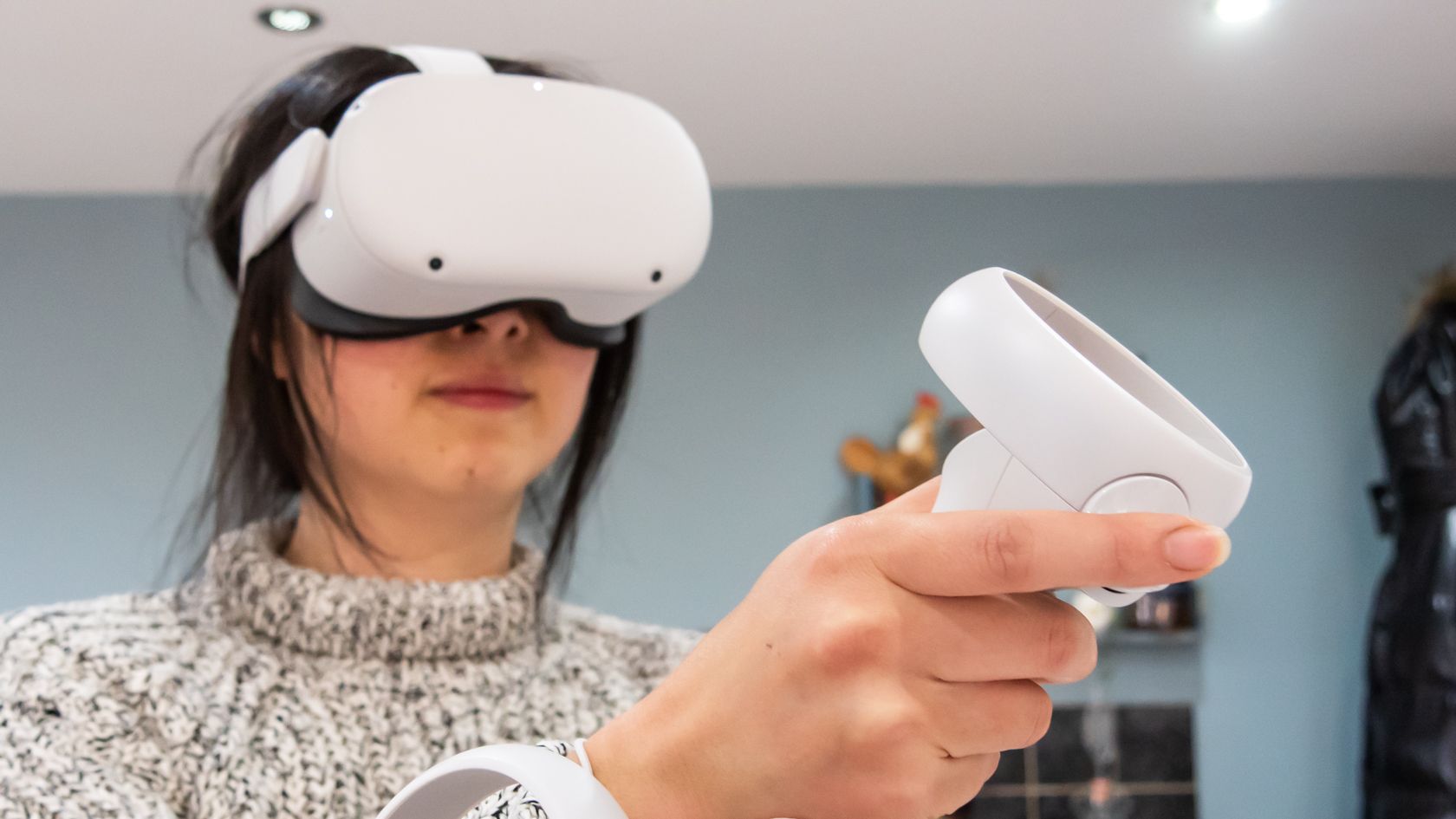Not only is the Oculus Quest 2 the best standalone VR headset yet, it's also the best budget option for PC gaming thanks to the Oculus Link technology. At the incredible price point of $300, it's an essential purchase for anyone looking to get into VR. Existing Oculus Quest owners might be disappointed by the black levels, but we think the increased resolution and responsiveness is well worth the trade-off.
- Brand: Oculus (Facebook)
- Resolution (per eye): 1832 x 1920px
- Display Type: RGB-stripe LCD
- Storage: 64 / 256 GB
- Connectivity: Wi-Fi 6 and 802.11ac, Bluetooth 5.0, USB-C, 3.5mm Stereo Out
- Battery Life: 2-3 Hours
- Tracking Technology: Inside out cameras on the headset
- Audio: Built-in speakers
- Weight: 1.1 lbs
- Hand-tracking is reliable, though not all software supports it yet
- RGB-stripe LCD adds resolution and pixel density, eliminating any screen-door effect
- Incredible value for a standalone headset, and a great buget choice for PC gaming
- Audio is terrible, but easy enough to plug in your own headphones
- Black levels are worse than the original Quest
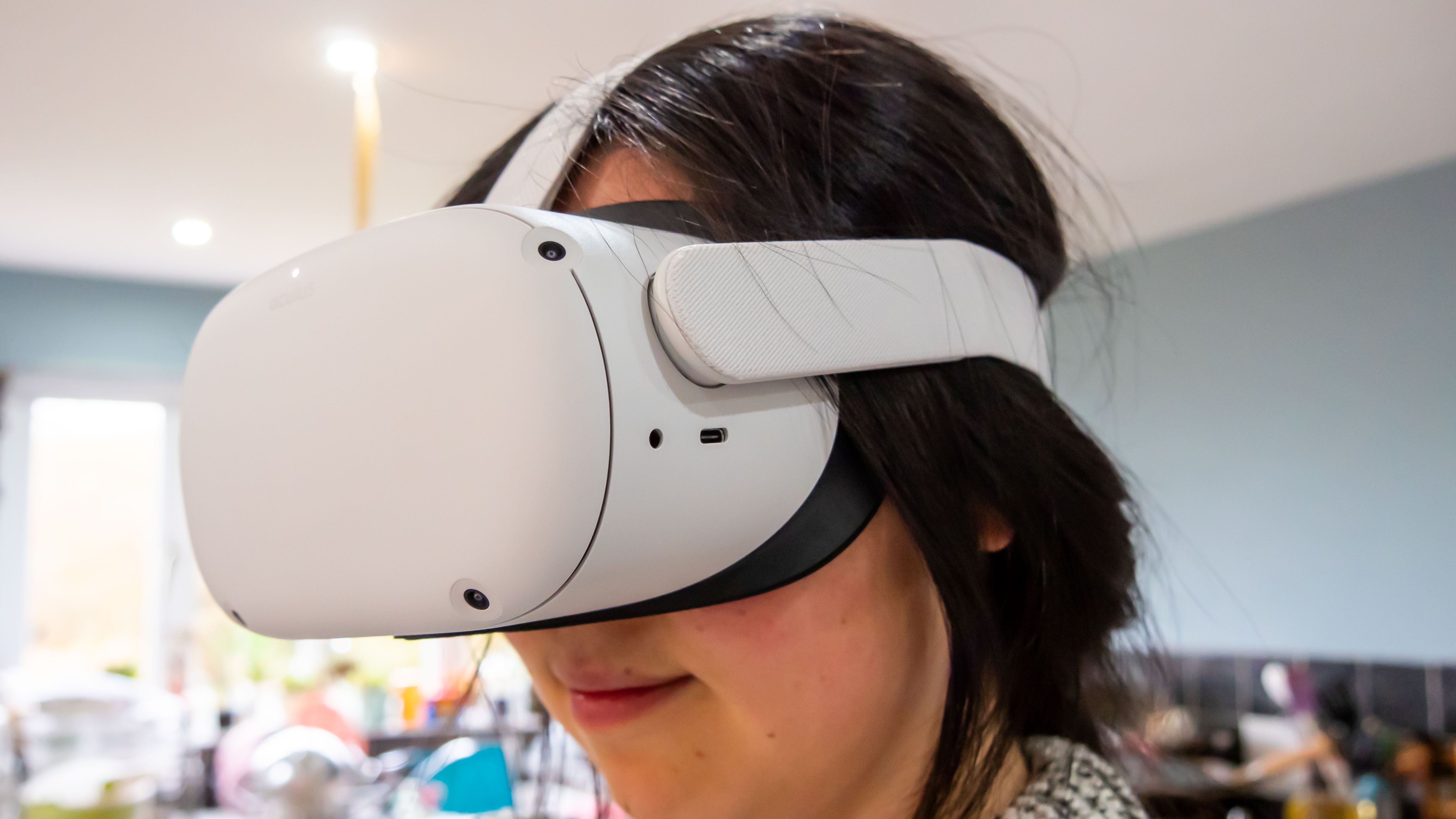
An incredible resolution, powerful mobile processor, and extensive software library make the Oculus Quest 2 the best wireless VR headset yet. And if you have the right cable and a gaming PC, it's also the best budget PC VR headset. That's quite an achievement–especially at a price point of just $300.
Read on to find out why the Oculus Quest 2 is the best mobile VR experience yet.
Why Should You Trust My Opinion?
I've been following 3D display technologies since the early 2000s, starting with NVidia's 3DVision. I backed the original Oculus Development Kit Kickstarter after reading about it from an MTBS3D forum member. From the moment it arrived, I knew it would change gaming forever, despite only a single demo being available.
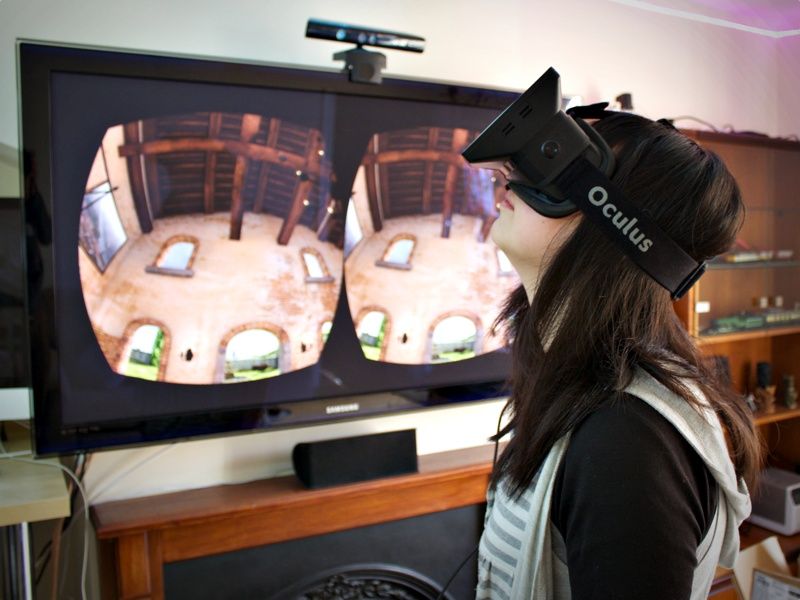
I kept throwing money at VR, on the Dev Kit 2, consumer edition Rift, HTC Vive (eventually with wireless upgrade), Oculus Go, and Oculus Quest. My current headset of choice is the Valve Index, though I probably use the Quest more than anything because of its convenience.
Note the absence of the Rift S. I knew at the time it was a dead-end for Oculus, bridging the gap while they perfected Oculus Link technology. I was right, and Facebook has confirmed that the Rift hardware ends here, with all future efforts pushed to the mobile space.
We’re going to focus on standalone VR headsets moving forward. We’ll no longer pursue PC-only hardware, with sales of Rift S ending in 2021. That said, the Rift Platform isn’t going anywhere. In fact, we've seen significant growth in PC VR via Oculus Link, and the Rift Platform will continue to grow while offering high-end PC VR experiences like Lone Echo II and Medal of Honor: Above and Beyond well into the future. - Oculus.com
Quest 2 Technical Specs and Design
Aesthetically, the Quest 2 has undergone one significant change: it's now white. This is undoubtedly the result of numerous psychological studies that told Facebook that white was a more acceptable color for consumer electronics destined for use in the living room. And they're probably right, given that sales of the Oculus Quest 2 are so far outstripping the original many times over. Other than that, the shape and overall design of the Quest 2 is relatively unchanged.
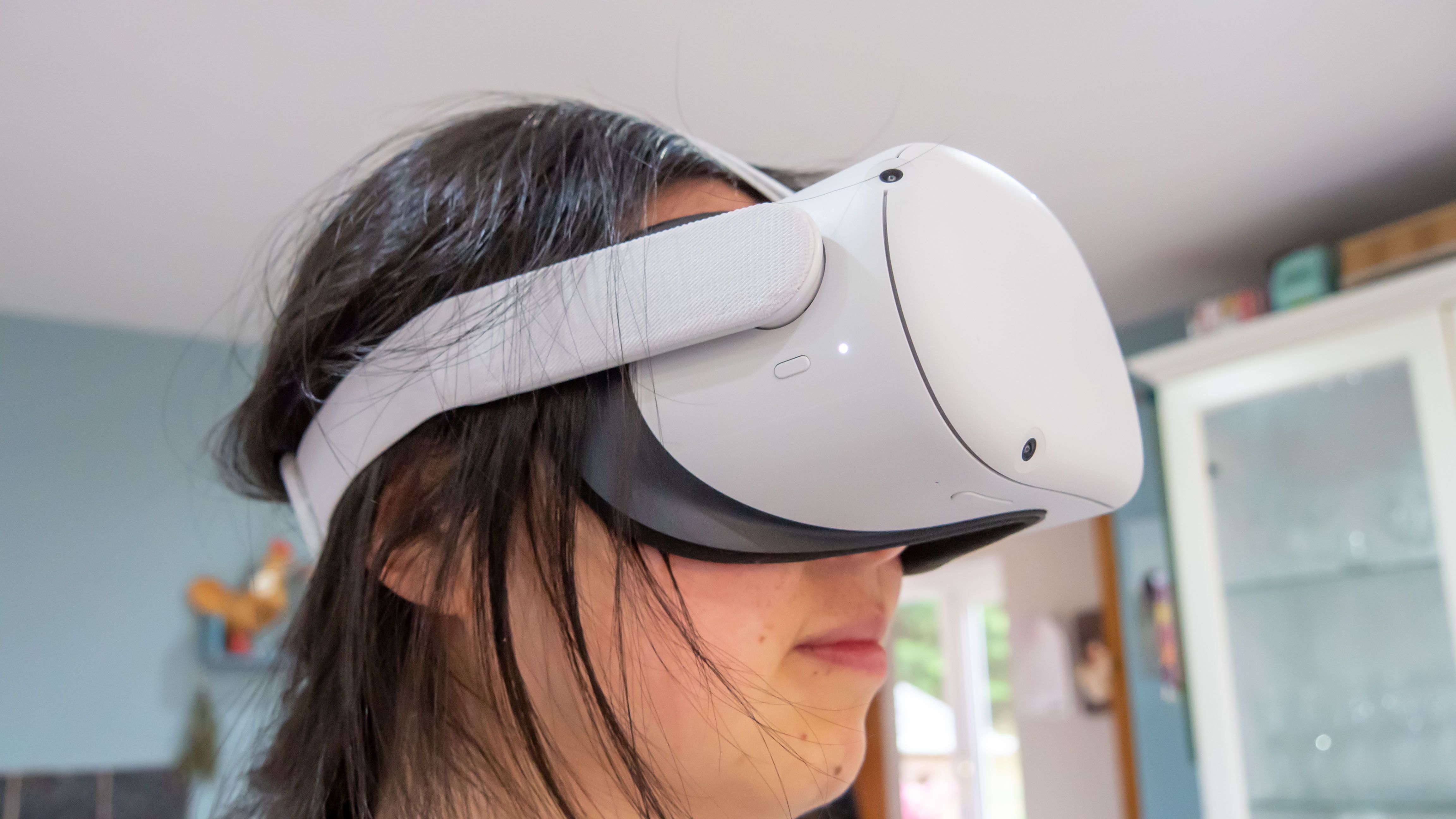
It ships with a flimsy head strap that tends to fall off in vigorous use and results in a weight distribution that's uncomfortably forward-heavy on the face. While Oculus sells a replacement "Elite" strap with a ratcheting lock, it's overpriced, and early reports indicate it's poorly made and prone to snapping. You'll find a better one on AliExpress.
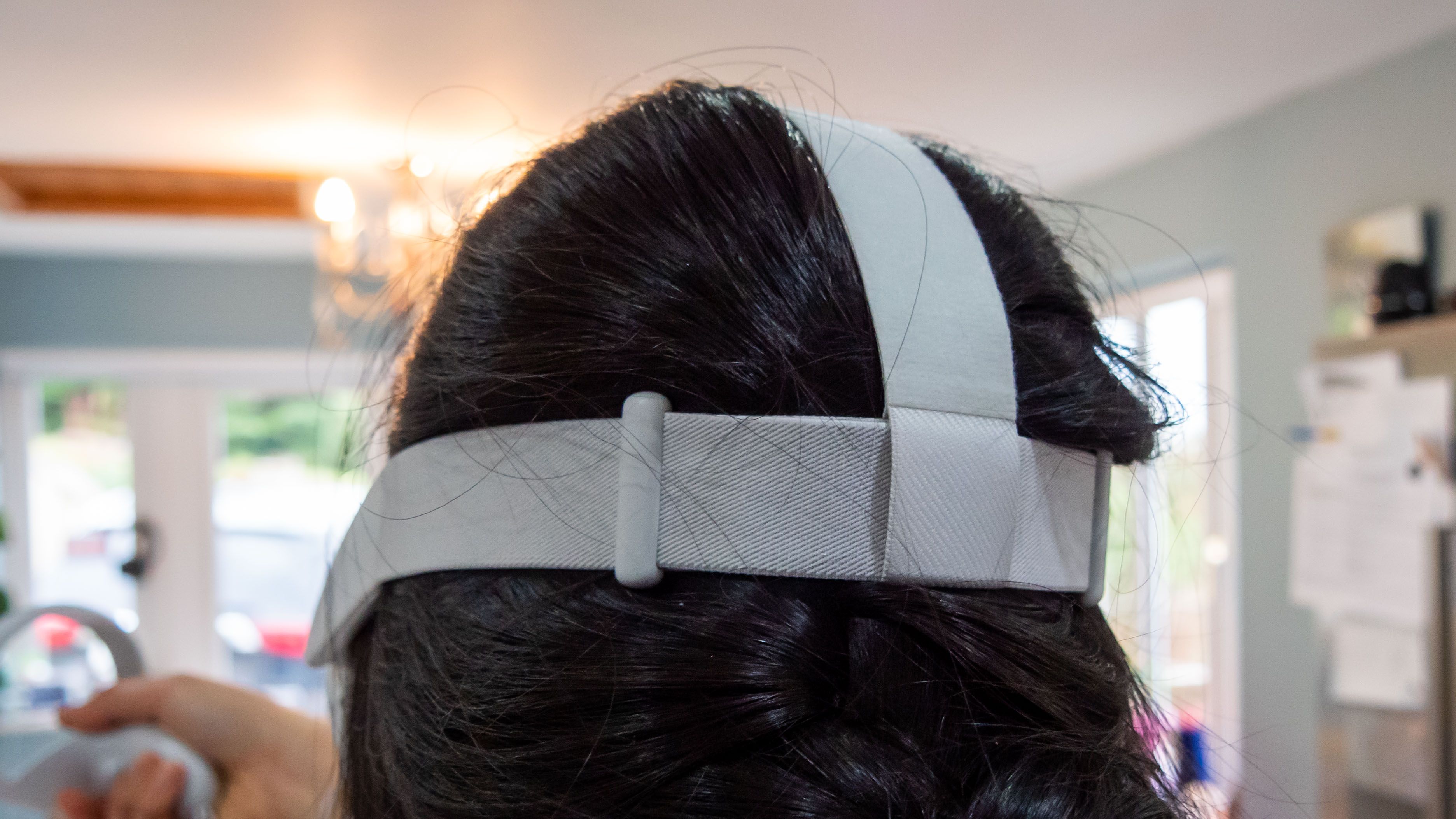
There are two versions of the Quest 2 available to purchase, differing only in the amount of storage space. The basic model at $300 has 64GB, while $400 will get you significantly more at 256GB. If you plan only to play games, 64GB is plenty enough. If you want to store big movies to watch offline when traveling, 256GB will likely be your best bet.
You can expect anywhere from two to three hours of use from the battery on the Oculus Quest 2. Two hours if you're playing games, three if you're watching movies. To ensure there's any battery left when you next pick it up, remember to power off the device completely by holding the power button and selecting "shutdown." Merely taking the headset off will turn the screen off, but the system will be paused and run the battery down in a day or so. The Elite Strap includes a battery which will give another two to three hours. There is no battery limitation when tethered to a PC.
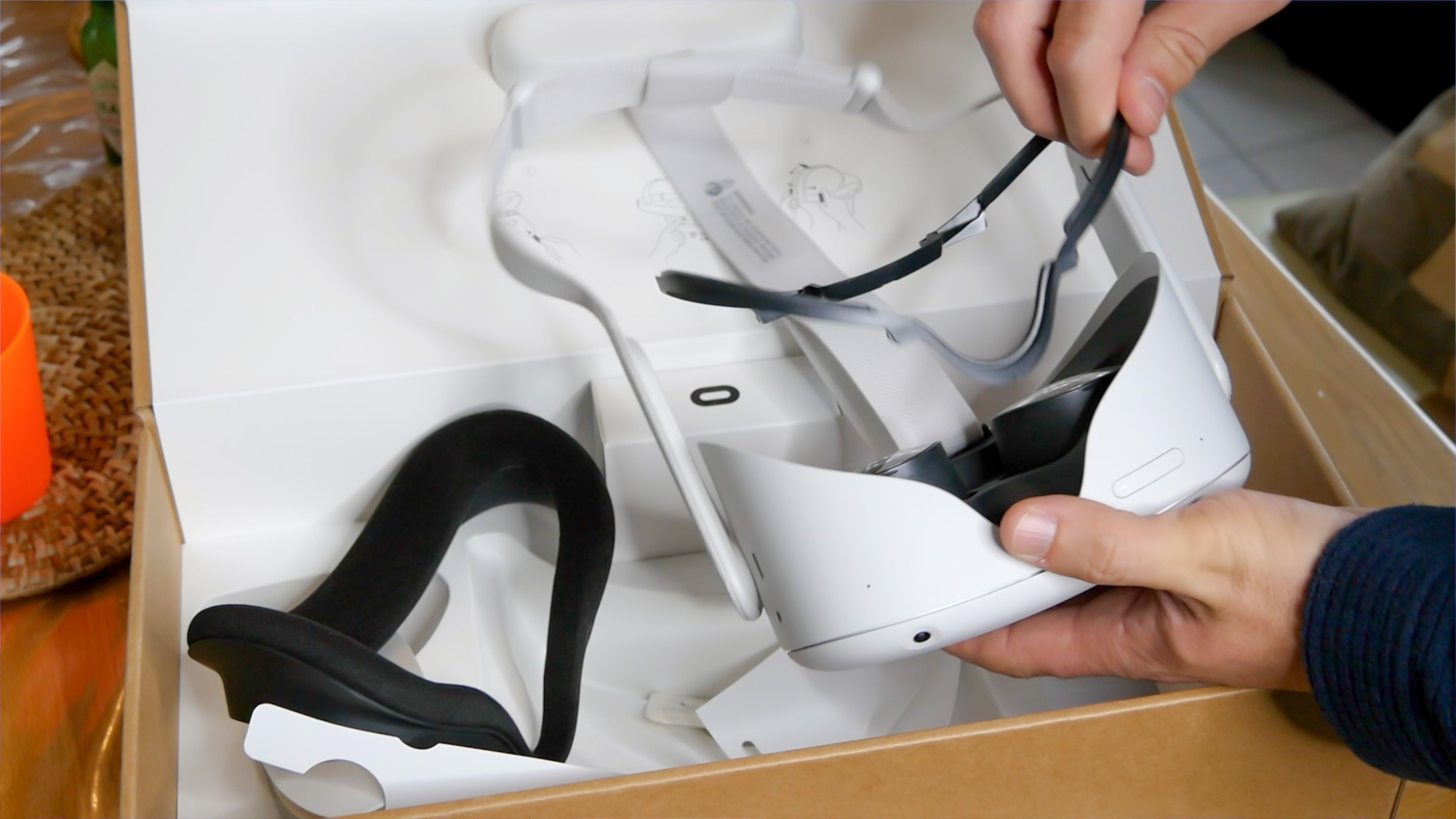
A USB-C charging cable and adaptor are also included in the package, though it's not long enough to be used for Oculus Link. A glasses adaptor is provided for those who find the headset is bumping up against their own lenses, which extends the face plate about 1/4 inch further out. It's easy to fit as the faceplate is simple to remove.
Visual Quality
The screen inside the Oculus Quest is perhaps the most significant change compared to the Quest, and it's not all for the better. Running at a higher overall resolution of 1832x1920 pixels per eye, compared to 1440x1600 on the Quest, Facebook opted for a single RGB-stripe LCD panel. The RGB-stripe configuration results in pixels that are closer together, and therefore higher density. This eliminates any so-called "screen door effect" and generally gives a higher perceived resolution (on top of a higher actual and ix resolution). Combined, it results in an incredibly sharp display. The display is also now capable of running at 90Hz, though this is not enabled by default, and most games don't take advantage of it yet. If I sound like I'm glossing over this point, it's because the 75Hz refresh has never bothered me.
Unfortunately, the choice of a single panel LCD, rather than dual-panel OLEDs found in the original Quest, has two significant drawbacks.
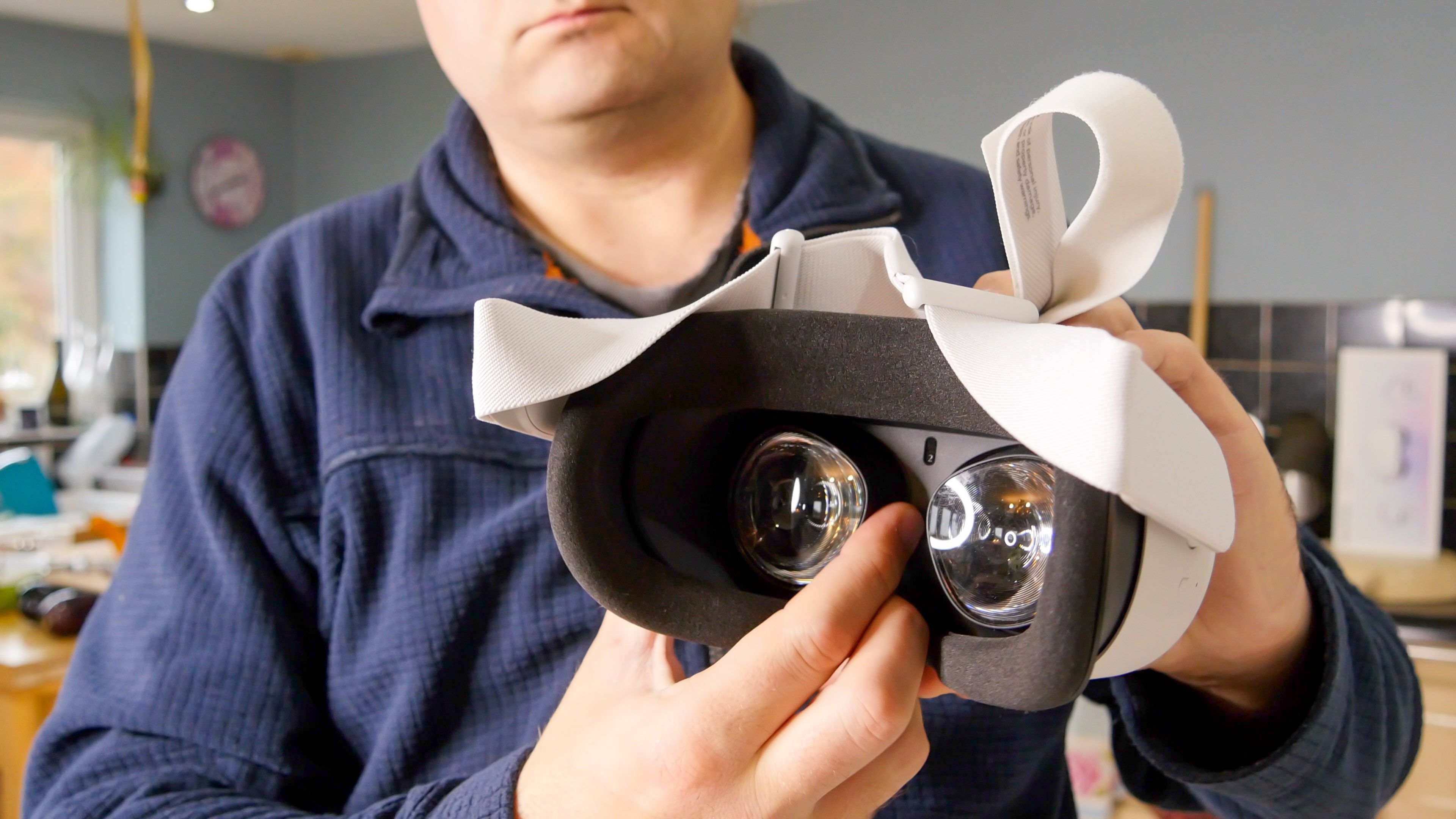
The first is the lack of real IPD (inter-pupillary distance) adjustment. Facebook has compromised and provided three discrete physical IPD settings, which you can click into place. These should cover everyone from 58mm to 68mm, though only those with the entirely average 63mm will get the best experience, and there's no software adjustment to accompany this—it's physically moving the position of the lenses. Therefore the area of the image you're focusing on also slightly changes. Sadly I can't comment on how non-ideal it is for other IPDs, as I fall into the category of entirely average.
The other drawback of using an LCD panel is the black levels. In short, they're more dark grey than black. If you play horror games, such as Walking Dead: Saints and Sinners, or enjoy watching darker movies in your personal VR cinema, you may notice it more than others.
To be clear, these are minor complaints. Other improvements in the resolution and pixel density far outweigh any perceived issue with black levels.
Audio Quality
The audio system feels upgraded but still terrible. Sound emanates from somewhere within the headset and is piped to your ears via the plastic clips on the side. Unfortunately, I'd forgotten how bad it sounds, having replaced the head strap on my original Quest with some 3D printed adaptors and the HTC Vive Deluxe Audio Strap.
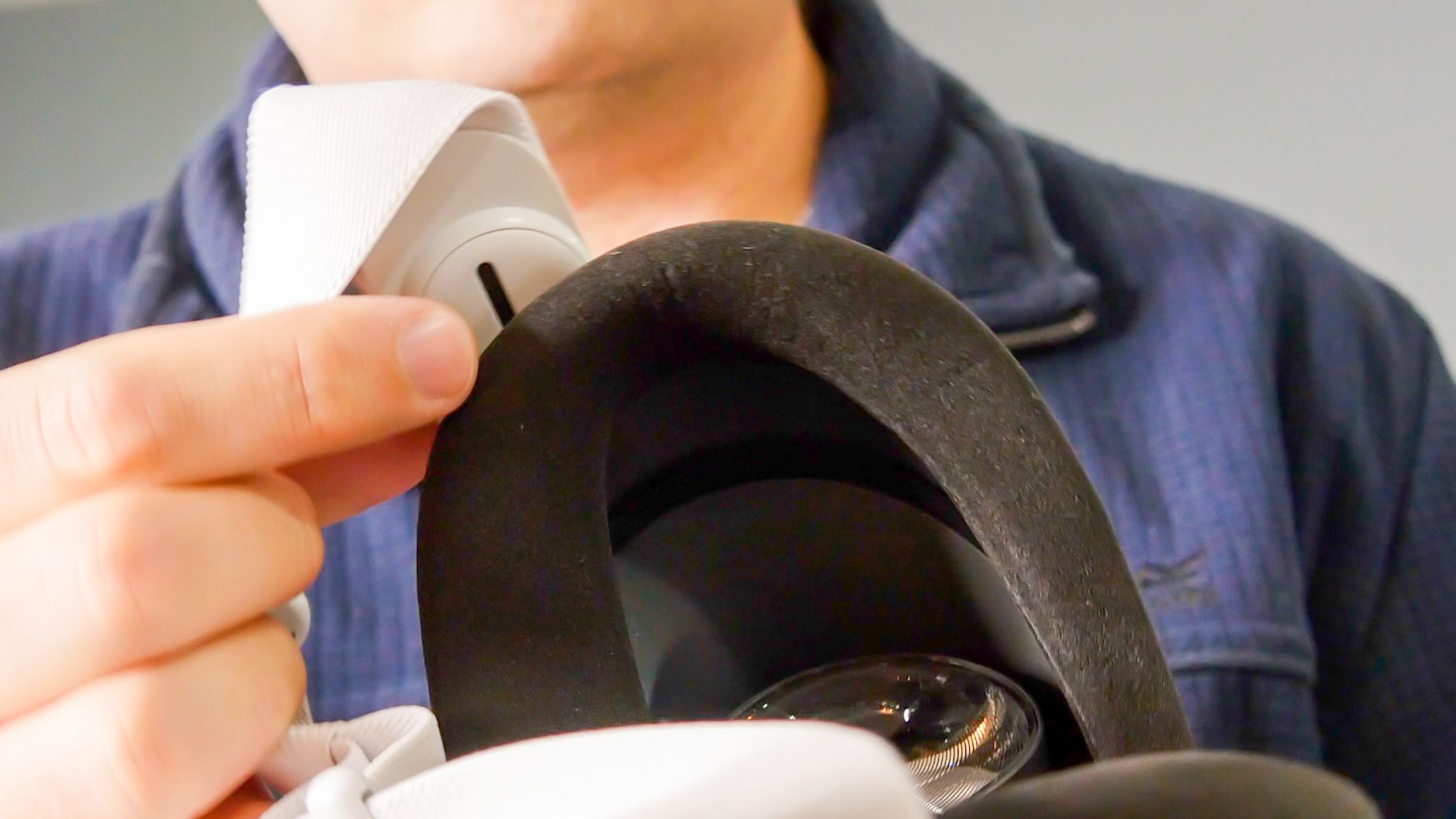
Though the sound quality is clean and gets pretty loud, with no muffled voices or distortion, it completely lacks bass. On top of that, there is no audio isolation at all. Partly, this is by design: Facebook wants you to stay somewhat connected to the outside world. But it works both ways, and the outside world can hear everything you do in VR.
Of course, you can fix the audio easily, so it's not a dealbreaker. A single 3.5mm stereo jack on the left-hand side enables you to plug in earbuds or your favorite cans. But that's some ugly wires on what is other an elegantly minimalist design.
Controllers
The controllers are also superficially unchanged other than being white now, with the same selection of capacitive buttons, a thumbstick, trigger, and grip button. This configuration means existing library software should work as is, with little required for developers to update code. A single AA battery powers each controller, with a ring of invisible tracking LEDs.
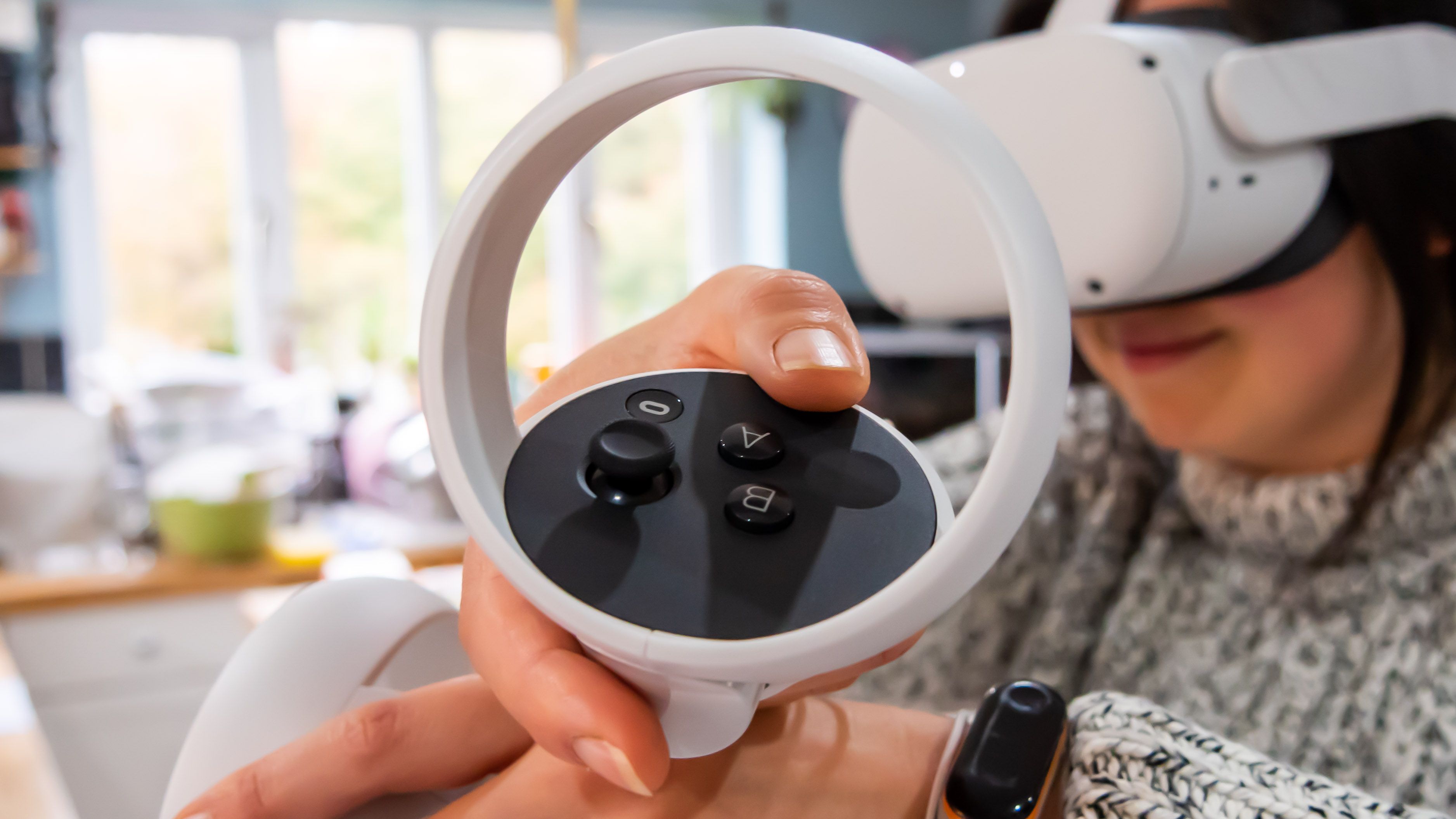
Upon closer examination, they appear to be slightly larger than the original controllers, though not noticeably so in use. I still find my hands cramping up after extended sessions. A capacitive thumb rest has been added.
Tracking, Passthrough, and Hands
Though the tracking technology also appears to be unchanged–with four cameras on the headset watching the LEDs embedded in the controller–it certainly feels smoother. The additional processing in the CPU results in less overall tracking hiccups, such that any blame for missed blocks in BeatSaber is now squarely on your shoulders.
Hand-tracking too feels distinctly smoother and more reliable. It feels like a viable way to interact with the system now, though not all software has been updated to use it.
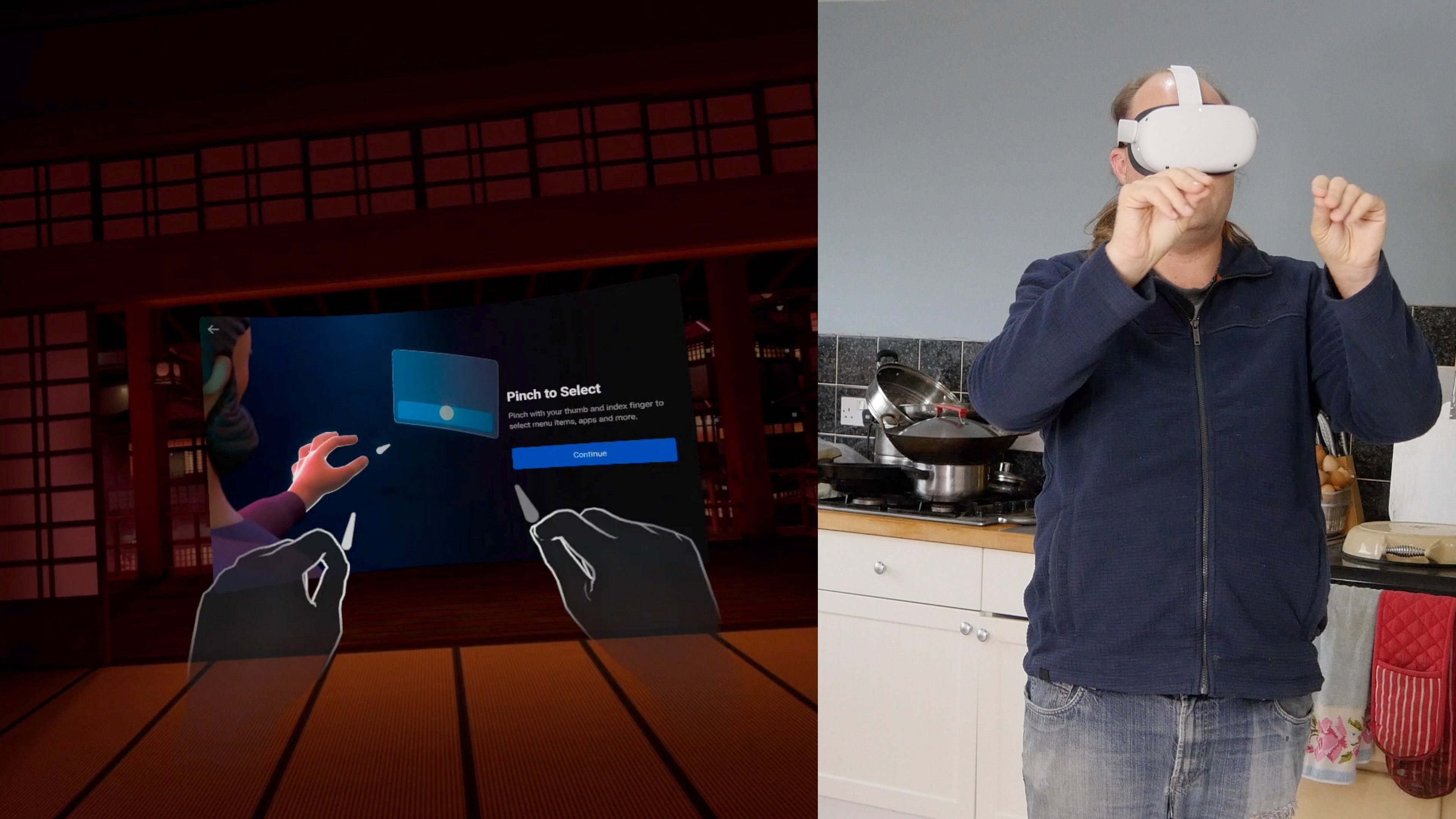
Also greatly improved is the camera passthrough feature. A quick double-tap on the side of the headset immediately reveals your surroundings, so you can step over the cat, take a sip of coffee, or inflict a brutal tickling on your child who thinks daddy can't see anything when he's wearing his headset.
Got a PC? Plug It In with Oculus Quest Link
While the Oculus Quest 2 delivers an incredible wireless VR experience, the graphical quality will never compare to those rendered on a desktop gaming PC. But with Quest 2, you needn't choose. Just plug in the Quest 2 using a USB-C to USB-C or USB-A cable, and you can enjoy full access to the desktop Oculus software or vast Steam library. Graphics will be rendered on your PC and sent to the Oculus Quest 2, just like any other tethered PC headset. I expect you're asking yourself, "can I play Half-Life Alyx on the Oculus Quest 2?!" and the answer is a resounding yes. Valve hasn't locked its games to any particular headset, and with full SteamVR access and native controller support, everything works as expected. And it's incredible.
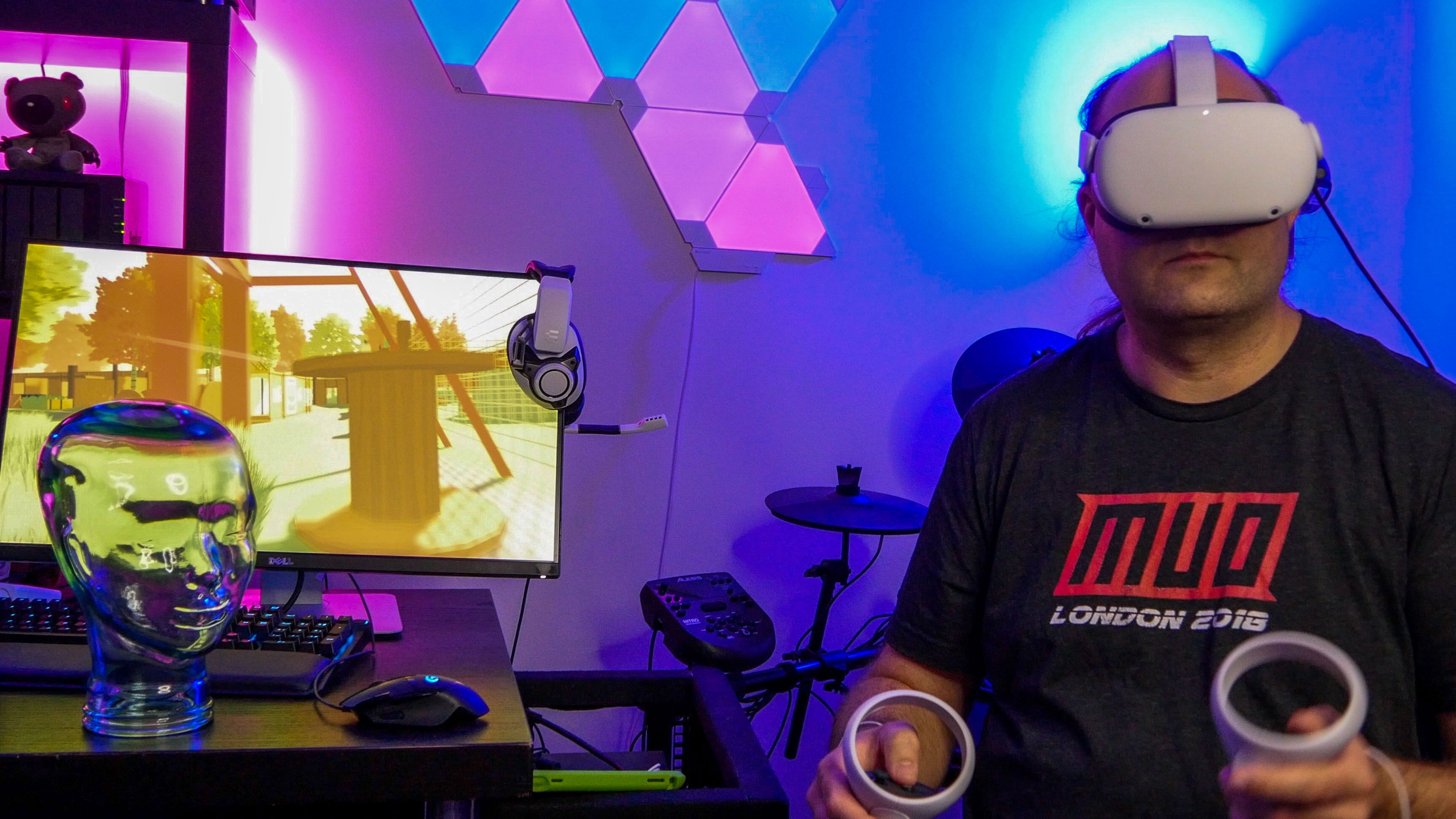
Oculus sells a branded fiber-optic Link cable for the best quality, though it's quite pricey at around $90. This Belkin cable is also officially compatible. If you have a USB2.0 cable (strangely, not all USB-C cables are rated for USB3.0 transfer speeds), you can still use Oculus Link, though the visual clarity will be somewhat degraded.
You probably think this is a bad experience compared to a "normal" wired headset. While it doesn't quite compare to the $1000 Index, it's certainly not what I'd call subpar. I've used a lot of tethered VR headsets and would be quite happy using just the Quest 2.
As for Quest Link latency: it's imperceivable. Even in fast-paced FPS games, or rhythm action titles like Beat Saber, I couldn't notice any latency. For comparison sake, I usually use a Valve Index tethered to my gaming PC.
Games on Oculus Quest
I tested in three games: Rec Room, Beat Saber, and Walking Dead: Saints and Sinners. The former two I have many hours of playing across platforms, so I'm intimately familiar with them. The latter I bought to compare directly the Quest 1 and 2, with fresh pair of eyes.
Overall, it was a mixed bag of results.
Beat Saber appears to be updated, and as far as I can tell, it takes full advantage of the resolution bump. The strobing lights and bright contrasts work particularly well on this type of display.
Rec Room, however, felt like legacy software. Though it's opened some additional maps for Quest 2 users to take advantage of additional graphical capabilities, the game appears to run at a lower resolution than the Quest 2 is capable of. The screen felt darker, with colors more muted than the Quest 1. I then compared to the SteamVR version of RecRoom over Oculus Link, and sure enough, it was a world of difference with bright visuals, even over a USB2 cable.
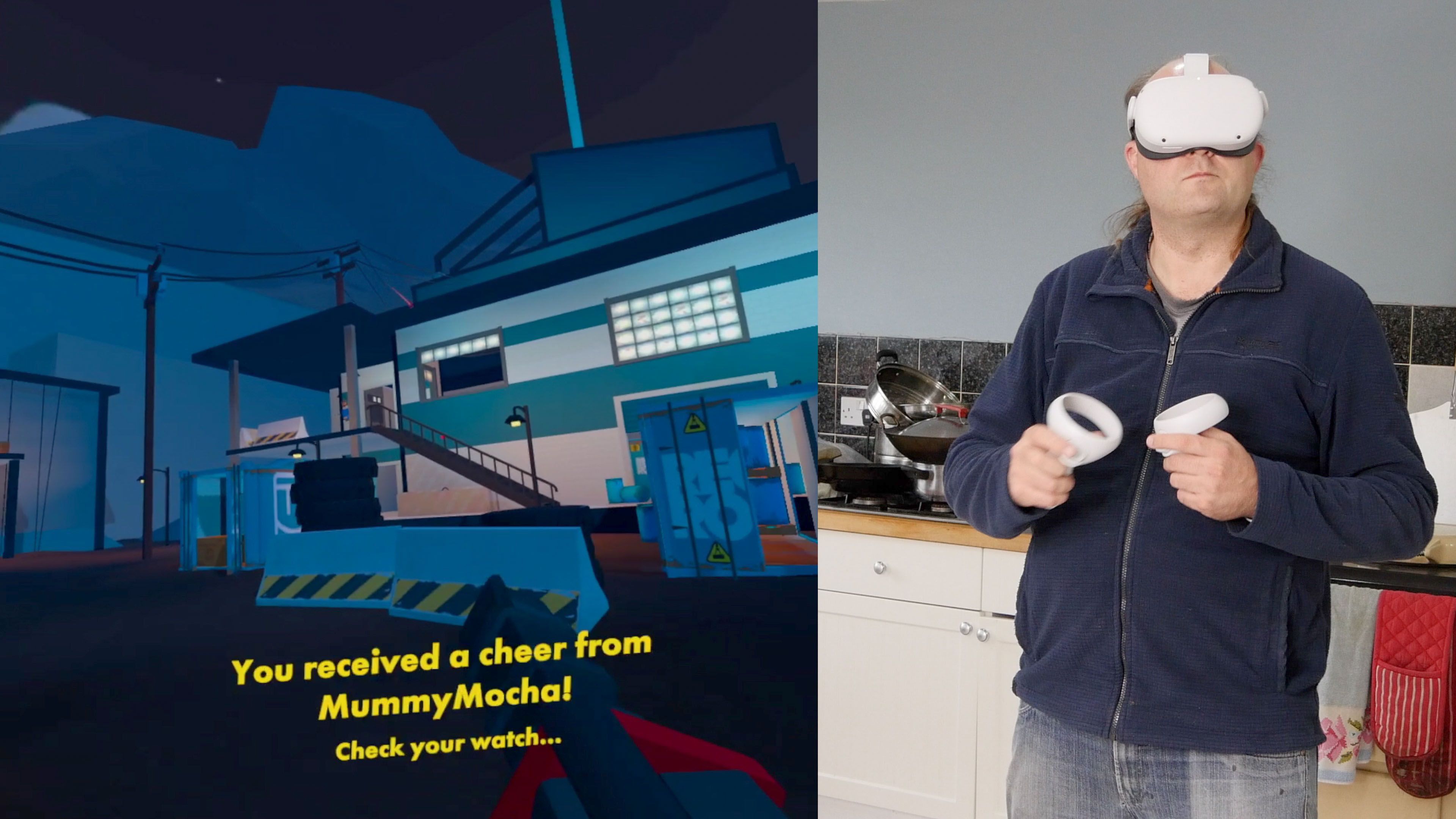
Walking Dead: Saints and Sinners is about as gloomy as a game can get, played mostly under cover of darkness, with fog effects galore. And sure enough, the black levels here were a murky dark grey at best. Swapping back and forth between Quest 1 and 2 highlights the screen differences. That said, given a choice between higher resolution or better black levels, I'd choose the higher resolution every time.
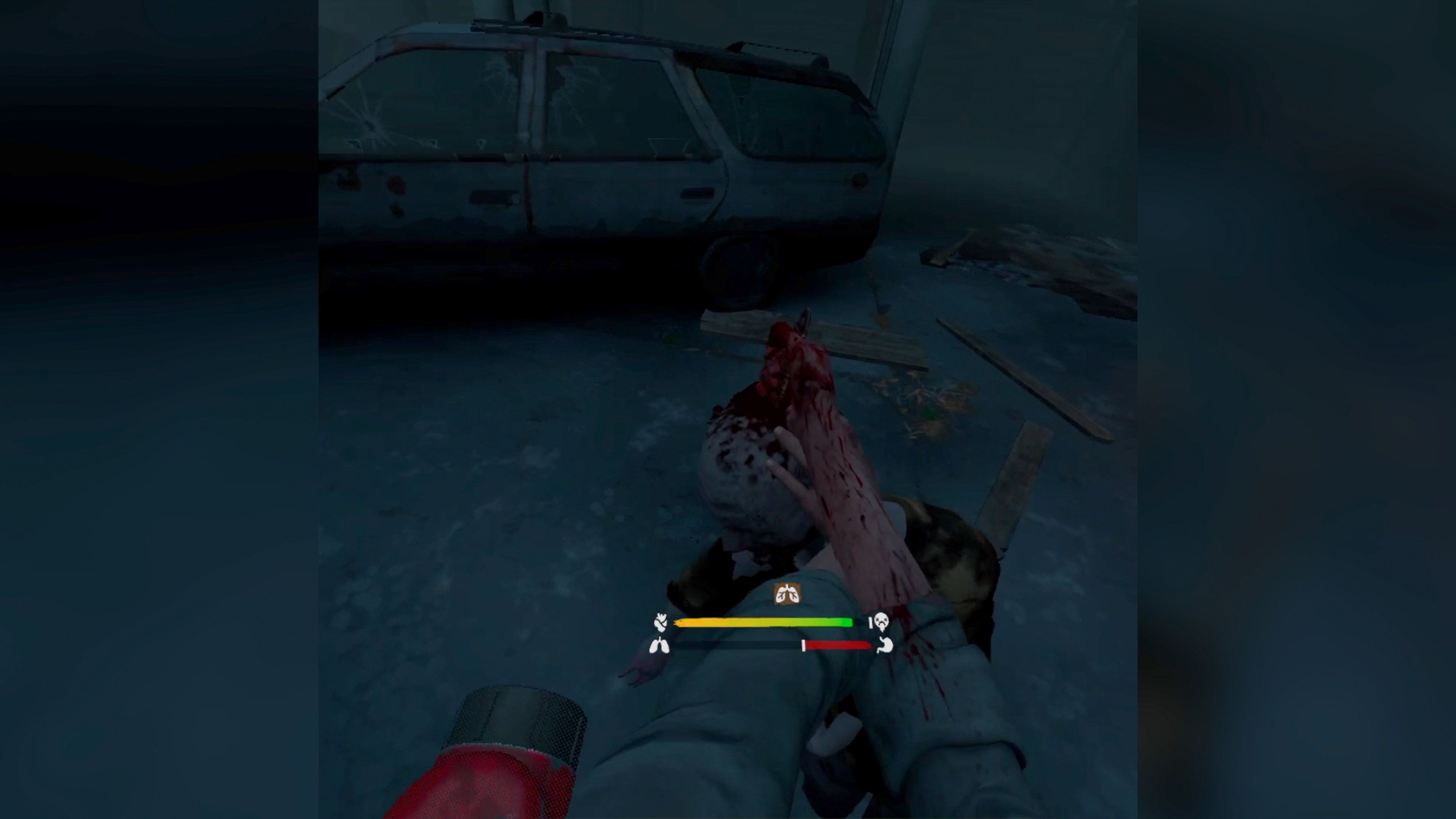
Of course, it should go without saying that these are my subjective opinions only, and your experience may vary.
The F-Word: Facebook
We can't review the Oculus Quest 2 and not mention the requisite Facebook account. While the Quest 2 has excellent hand-tracking, that's probably not the only thing it's tracking. As is written clearly on the box, this device requires a Facebook account. No ifs, no buts, no workarounds, no opt-out. And not just for social integrations (as was previously the case), but to merely activate and use your device.
If you're thinking, "that's ok, I'll just make a fake account," then think again: many users have found their fake accounts deleted and have lost access to all their Oculus purchases. Not only do you need a Facebook account to use the Quest 2, but you also need a real, active account. You'll be asked to submit a photo ID if Facebook suspects shenanigans.
Precisely what privacy implications this will hold in the future is yet to be determined. Will Facebook be able to watch everything you do in VR? It seems unlikely, though it is technically possible. For now, Facebook has stated that it'll be strongly moderating user actions within the new Horizons social VR space, currently in beta for selected users. A rolling camera (similar to a car dashcam) will record everything you do, and if another user reports you, the relevant footage will be saved and uploaded for manual review. Facebook employees will also be able to drop in on your at any point and remain invisible to observe your behavior. While this sounds terrifying to some, it may be precisely what social VR spaces need to succeed. The potential for long-term psychological harm in online social networks is somewhat limited when interactions are text-only. In VR's physical space, they're on a whole other level.

Personally, I couldn't care less. I merged my Facebook and Oculus account a long time ago. If I did have a dark alter-ego where I live out sadistic fantasies or troll feminist gamers, I probably wouldn't be doing it anywhere near the account where my mum is.
But for those of you who are entirely Facebook averse, I doubt the technological progress that the Quest 2 brings will be enough to convince you otherwise. In which case, consider yourself out of the mobile VR game because there isn't a worthwhile alternative.
Should You Upgrade From the Quest?
The original Oculus Quest felt like a mid-range smartphone unwillingly coerced into doing double duty as a VR headset. It was still the best VR experience at the time of release, and throughout its lifecycle, no other viable contender stepped up.
The Quest 2, however, flies along, doing whatever it's told with glee. While the Quest's hardware inadequacies remain unchanged (the horrendous audio and uncomfortable headset), it's understandable that some compromises had to be made to get a high-resolution wireless all-in-one VR headset down to the frankly ludicrous price point of $300. Facebook has delivered on its promise of making VR accessible for the masses, and we should praise it for that endeavor. If we need to give up a little privacy for that, then so be it. VR's ability to teleport us to anywhere we can dream of is a powerful tool for change, and I want everyone to have that opportunity.
As for whether you should upgrade? It's debatable. Personally, the resolution bump, more powerful processor, and generally more responsive UI throughout are more than worth it. I would have happily paid $500 for a "Pro" version of the Quest 2, with an OLED screen and possibly better audio, but I'm pleased with the upgrade. I'll add some padding to the controllers and replace the head strap; such is the convenience of a world with 3D printing. I'm not a massive fan of horror movies or scary games—there's enough horror in real life. I want my VR experiences to be bright and colorful. But if you know you're a stickler for black levels, you might want to hold off.
The Oculus Quest 2 isn't just the best mobile headset, with a gimmicky feature that lets you plug it into a PC. It's the best budget PC VR headset, too. While it may be a questionable upgrade for some original Quest owners, it's the best choice if you don't already have a VR headset. You will not be disappointed.
Do You Have Oculus Quest 2 Questions? We've Got Answers!
How much do Oculus Quest games cost?
Games in the Oculus Quest library cost anywhere from nothing (Rec Room, with in-app purchases for cosmetic items that you can also buy with earned currency) to $19 per month for Supernatural VR, a fitness game with licensed music. Most fall between the $5–$20 mark.
How Big Are Oculus Quest 2 Games?
If you're considering whether to buy the 64GB or 256GB Oculus Quest 2, you should know that even the biggest Quest game is around 8GB, meaning you can comfortably fit several on the 64GB model. Most games (and apps) are under 1GB. If you just plan to play games and not store large movies, 64GB is plenty enough.
How to Stream Oculus Quest to Twitch?
By default, you can stream to the Oculus app on your phone, a Chromecast 3 device, or your personal Facebook page. For anything else, like Twitch, you'll need some cables and a PC. Using a USB-C cable, the ScrCpy utility (built into SideQuest) will display the visuals, while you'll also need a stereo audio cable to capture sound. You can then pipe this through the usual desktop app like OBS and out to your platform of choice.
Can I Play Custom BeatSaber Songs on Quest 2?
Yes, but it's not a simple process. You'll need to first enable Developer Mode and install SideQuest, a third-party unofficial app store and method of adding generic APKs to your Quest. Then you'll need to install BMBF, which includes the BeatSync mod. This will give you access to custom songs from BSaber.
How Does Oculus Quest 2 Tracking Work?
The Quest 2 features four small cameras embedded in the headset. These watch your play space to figure out how your head is moving. At the same time, there is a ring of infra-red LEDs on each controller, which only the headset can see. Combined, you have full freedom of movement and motion controls in a standalone package. A virtual Guardian wall will prevent you from leaving the play area. You can either draw this using the passthrough cameras, or opt for a standing-only play area (in which you can turn around, but stay in one spot). The wide-angle cameras situated on the sides and bottom of the Quest 2 ensure ample coverage. While moving your controller around your back will force it to lose tracking, this rarely occurs in practice. The Oculus Quest 2 tracking cannot fully function in darkness: it must see your environment. If it's unable to track your surroundings, the system will revert to a 3DOF mode, whereby you can only rotate the headset and have no positional tracking. This mode is fine for watching movies in a dark environment.
Does Oculus Quest 2 Have Full Body Tracking?
No. While the Quest 2 is capable of tracking your hands (without using controllers), it's not able to track your feet or the rest of your body. Full-body tracking is only possible using third-party hardware in tethered Oculus Link mode.
Oculus Quest 2 Review: The Best Headset for Everyone posted first on grassroutespage.blogspot.com
